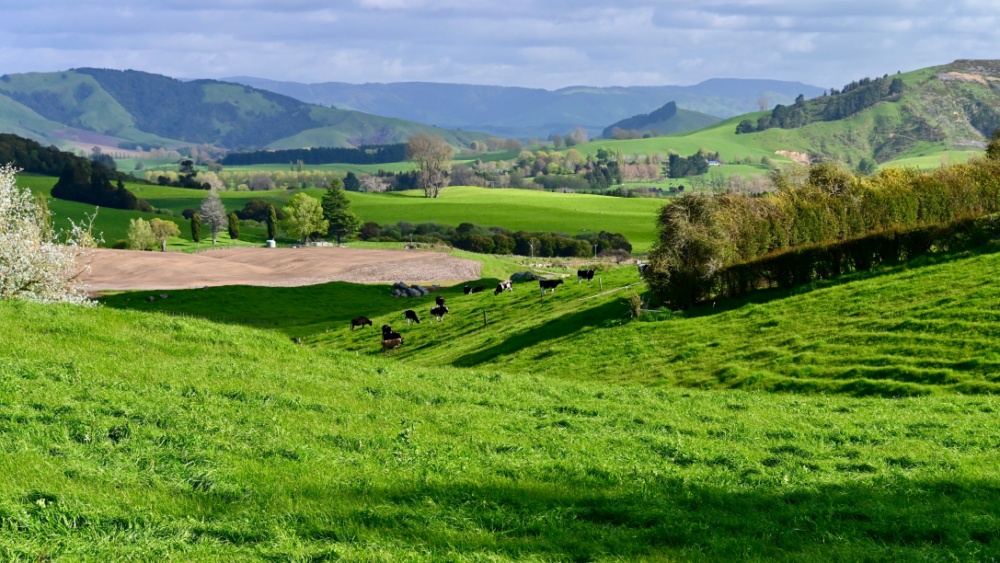Labour weekend here in the Waikato is when we shrug off the cold mornings and change to a lighter duvet. It’s also a good time to be managing for pasture quality into summer, writes farm consultant Graeme Ogle.
Pasture growth on farm has been steadily increasing, with growth and demand very close at present. This close match of growth and demand is what drives overall feed utilisation, and mismatches now can cause a drag on performance for many months.
The maths is reasonably simple, and the concept can be applied at any scale between block and whole farm, and from next week to the next year. Let’s consider a sheep and beef example:
At this time of the year with ewes and cows set-stocked we will need to adjust areas as pasture growth accelerates.
| Current pasture cover | 1600 kgDM/ha |
| Target in one month’s time | 1800 kgDM/ha |
You would like to see cover increase a bit. Imagine your growth and demand looked like this:
| Pasture Vibe average daily growth rate over the month | 60 kgDM/ha/day |
| Livestock demand (11 ewes/ha, consuming 3.5kg DM/head/day) | 40 kgDM/ha/day |
| Difference (growth – demand) | 20 kgDM/ha/day |
In this simple example, over the next 30 days pasture cover will increase by 600 kgDM/ha and the final cover will be 2200 kgDM/ha (600 added to the 1800 kgDM/ha current cover).
On this basis, we’ll be outside our target. We know the challenge ahead into summer is quality, so we want pasture cover to be below 2000 kgDM/ha. If we do not match growth and demand, we will have no chance of stopping pasture going to seed.
Surfing the pasture quality wave
Over the past month, I have been discussing the quality wave with farmers. When pastures reach the third leaf stage, this single stage will nearly double the pasture cover. In the short days after, pasture quality will decline to a point where it is more a problem than an opportunity. At this point the wave has crested and is now crashing around us. It has lost the power to drive performance.
Once we start rotating ewes and lambs it’s worth walking ahead in the rotation.
If you were one of those ewes, in which paddock would you like to enter the rotation? On inspection, what quality feed is the paddock offering?
Sometimes you get behind, but if quality is declining it is not a time to get optimistic that you will catch up in a few days: you may need to drop some paddocks out.
The objective is those ewes achieving a full lactation, and here dairy farmers have a clear advantage. Imagine if sheep farmers were able to measure the milk solids produced each day! In the first season there would be some valuable in-paddock head scratching going on.
For sheep and beef farmers the first real performance insight isn’t really until weaning. By that time it can be difficult to make the connection back to paddocks, paddock condition, and at what time reduced performance occurred.
Where Pasture Vibe contributes
Influencing weaning performance – particularly weaning weight – requires riding this pasture quality wave, and it is one of the most important skills in modern pastoral farming. It can be a simple equation, that needs to be repeated regularly.
One of the hardest parts to this equation is future pasture growth rate. That is why we are so enthusiastic about Pasture Vibe. The old Pasture Growth Forecaster service than ran for 7+ years has now been retired, but all that functionality and more is built into Pasture Vibe.
Get a customised forecast for your property, a weekly email update, and the ability to explore past and forward growth rates with a free month’s trial at www.pasturevibe.com.

Comments are closed.